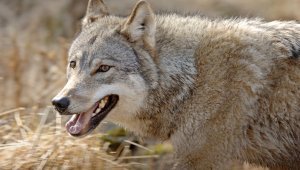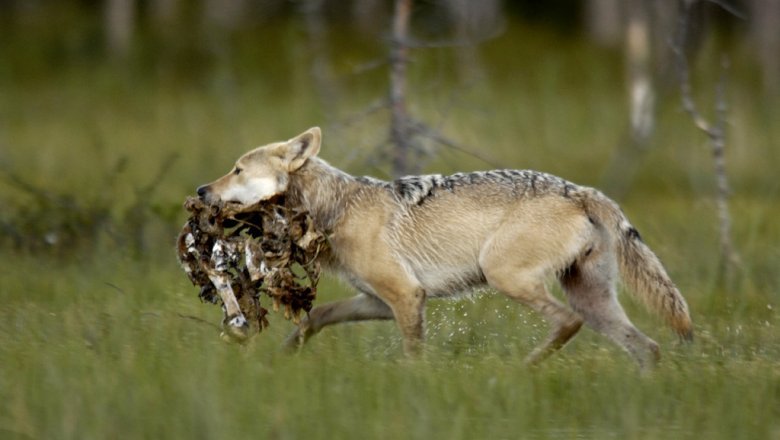The wolf's diet varies especially in the early summer. It might prey on moose as well as smaller animals, such as hares, rodents and birds. The cubs must be fed every day. As autumn draws near and the cubs grow larger, hunting becomes easier and there are more large game animals such as moose calves to prey on. The entire pack participates in food acquisition and the young cubs learn how to hunt.
How does the wolf hunt?
Like all canines, the wolf has evolved into a durable and persistent pursuer that works together with its pack to hunt game animals that are a lot larger than itself. The natural way for a wolf to hunt is with its pack, but a lone wolf can also take down a moose by itself. A large animal hunted by wolves will have deep cuts in its neck and the back of its thighs from the wolves' canines.
The way wolves hunt varies a lot based on the target animal and also on whether the prey is trying to fight back or escape. The wolf might attack a large deer animal from behind to stay as far away from its forehooves as possible, but the wolf commonly attacks smaller game from the front. The wolf kills its prey by biting it in the neck area. It may also bite a large prey animal in the snout. The wolf might also bite smaller game, such as sheep, foxes and beavers, in the back. An animal killed by a wolf can have bite marks all over its body. The distance between the wolf's canines is between 35–55 millimetres.
The wolf often seems to begin eating the animal from its open wounds. If there are many wolves feeding off the same animal, the meal proceeds quite chaotically. The wolf uses the entire animal and will chew even its larger bones to bits. Sometimes the wolf might also hide its kill. When wolves are left to feed undisturbed, there will be nothing but pieces of skin left of even the larger prey animals. Telling apart an animal killed by a dog and an animal killed by a wolf can sometimes be difficult. Usually the dog's bites are less systematic and found all over the prey's body and they are also not as powerful as those of a wolf.

